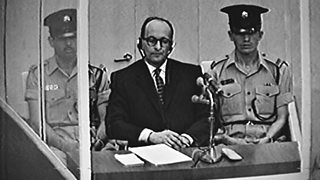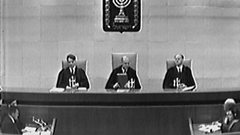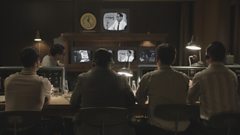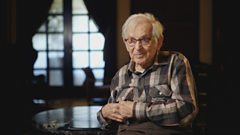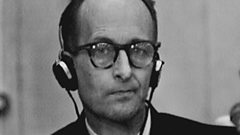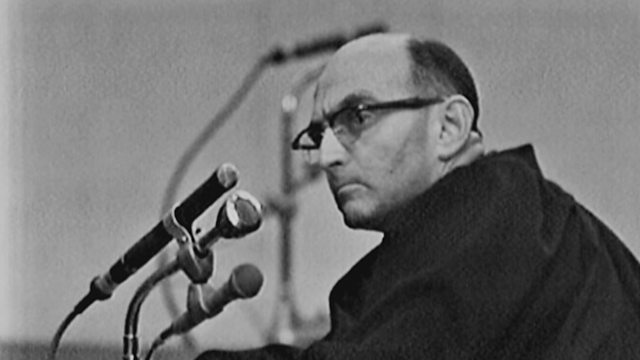
How far can one person be held responsible for the Holocaust?
Understanding Adolf Eichmann’s trial experience and responsibility for the Holocaust.
The clip opens with Adolf Eichmann in his glass box presented in the Jerusalem courtroom. He is dressed as a smart professional with sharp suit, spectacles and a rigorous manner. Such a ‘cold correctness’ and separateness is felt in this clip of a man being held responsible for the Holocaust. Professor Cesarani explains that Eichmann once stated that “I delivered them (the Jews) to the butcher” reflecting his limited sense of responsibility for the final solution; however he was accepting that he played a part in bringing Jews from the ghettoes, towns and villages to the factories of death. With footage of an animated Adolf Hitler speaking to large audiences in the early 1930s, Eichmann is described as a senior member of the security service of the party and the SS since the 1930s. He was appointed head of Jewish affairs within the SS with the responsibility for logistical organisation and transport of the Jews; a problem that started as de-Jewification and forced migration through to extermination of 6 million Jews, or two-thirds of the Jewish population of Europe. Professor David Cesarani explains that members of the Nazi SS believed that they were in a war of life and death and the Jews were the enemy. Eichmann was responsible for moving Jews to extermination camps, out of ghettoes, for mobile killing squads and the forced movement of prisoners. And Eichmann blamed for it all. We see Eichmann’s defence lawyer present the argument that Eichmann was an unfortunate middle manager for state security with sole involvement in the transportation of Jews. Cesarani states that Eichmann presented himself as helpless, with no choice, following orders, and it was not for him to question the instructions of the ‘big bosses’. We now see Eichmann in his glass courtroom case as he was through most of his trial, sitting alone, almost looking removed, interspersed with moments when he stands up to answer questions of the court. He is seen under cross-examination where he is delivering very detailed responses. Cesarani explains that this was central to his defence presentation of a man who was boring, bureaucratic, and pedantic and nothing more than a harassed administrator. An exchange is seen between Gidon Hausner, Chief Prosecutor, and Eichmann who’s cross-examination lasted over 50 hours. Eichmann is seen sitting in his chair as the court is played footage of the camps captured after the war revealing the aftermath. Professor Cesarani suggests that Eichmann buckled when it was revealed that Eichmann threw himself into tasks and roles and when, at the end of the war he stated, “If he was going to jump into his grave, he was jumping in gladly knowing that he was taking 5million Jews with him.” Here was a man who took more than orders. Finally, on the 11th December 1961, the three judges are seen entering the court and begin reading their 211 page judgement that took 15 hours to read out. Eichmann, sitting impassive and unemotional, was pronounced guilty of all charges against him and sentenced to death.
Duration:
This clip is from
More clips from The Eichmann Show Documentary
-
![]()
The Eichmann Trial and the State of Israel
Duration: 05:34
-
![]()
Managing evidence and recording the trial of Adolf Eichmann
Duration: 05:30
-
![]()
Who was Adolf Eichmann?
Duration: 05:53
